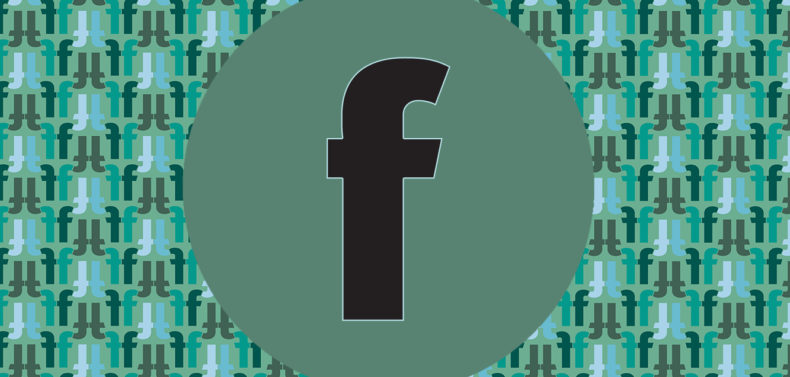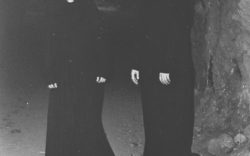Read the first installment of this series here.
“Hope there isn’t a fire,” said the man in the hardhat and vest. He was smiling, but he was not happy. We, the volunteers, took a moment to strike a variety of postures: agog, disquieted, even sort of put out. The man in the hardhat shrugged and shook his head and continued to smile. “Told them not to put it there.” Another moment. Someone: “What do you want us to do now that it’s there?”
“Move it.”
“It” was a pile of garbage. Some of it bagged, all of it wet. It probably would’ve filled about five decent-sized dumpsters. And it was obscuring a fire hydrant. Whoever this guy in the hardhat was, I had no idea. Who was the “them” that he warned so direly against the chosen location for the pile of wet garbage? A good question for a ghost; someone who was maybe in charge at one point. Perhaps they’d had a hardhat, too. Difficult to say.
We started moving the garbage.
We stood on the dead-ending Van Brunt Street in the Red Hook neighborhood of Brooklyn. Were one predisposed to continue driving down this dead-end street, they would quickly find themselves in the New York Harbor. But one wouldn’t need to have done that this past week; the New York Harbor could have come to them.
While its rustic waterside ambiance renders it unique to Brooklyn at large, in many ways Red Hook is a locale typical to the borough in 2012: desirable property, housing well-heeled local businesspersons, abutting nearby housing projects. Up until fairly recently, the Red Hook Houses, Brooklyn’s largest public housing development, was the landmark the neighborhood was known for. But if it was once a neighborhood “up and coming,” it had already come up a ways. (May I point out the “IKEA in Red Hook” section of that neighborhood’s Wikipedia page.)
Our task, as volunteers, was to help clean out the flooded artists’ studios associated with the Brooklyn Waterfront Artists Coalition. (“Sandy Visits Our Gallery,” their website notes dryly.) The warehouse was a home not only to visual artists but plenty of artisans and scrappy DIY-ers, many of them carving out careers in their modest studios. Among the debris, there were printing presses, the remains of a small company that built stereo speakers, and other (potentially) salvageable commodities. Much of everything else was for the pile. Moments after my friend/feral trumpet player Dylan Angell and I helped take stock of what was left of a printing company’s wares, the room’s spatial qualities shifted. About five feet from the ground, a dismal gray watermark had shown where the water’s surface once stood. Volunteers with hammers began to hack away at the soggy drywall. The room was no longer a room.
Back to the pile: we were not going to move the entire pile—there really is no “good place” for a giant heap of wet shit—but the decision was made among the volunteers to instead clear a path. Garbage bags were dragged; everything else was tossed with cathartic vigor. When the path to the fire hydrant had been cleared, Dylan found some red spray paint and marked the spot. “My spray paint handwriting isn’t that different from my regular handwriting,” he noted.
While confusion and inefficient expenditures were to be expected, the scene was actually remarkably gung-ho and on-point. Supplies—gloves, paper towels, cleaning solvents, face masks—were pooled and put to good use. Earnest newcomers always seemed to be showing up, bashfully looking for some temporary purpose. Tools were being cleaned with WD-40. We tried our best to liberate some floor mats of the oily grime that had traveled in with the storm waters. One couple went from volunteer to volunteer offering slices of pizza.
The residents of the space knew best what to save and what to toss, what went where and how people could help, and so were made to be the executors of their living wills before their time, doing inventories on past lives. They worked with attitudes ranging from grim automation to forward-march determination. It was, it seems, what it was, and there sooner they ripped into the future, the closer they’d be to returning to normal life.
Walking away from the water, we were greeted by diminutive cousins of Big Daddy Pile of Wet Trash. Things, which had belonged to people. We found images reminiscent of our trip to lower Manhattan: pipes pumping water out of basements; dead traffic lights swaying with indifference. Trees that went down swinging and took whatever was nearby with them.
Here’s what we didn’t see: anyone from any government organization. No ConEd trucks, either. Red Hook Initiative, a local community center, was accepting donations and directing volunteers. The Occupy movement had gotten the band back together and appeared to be doing far more than FEMA was for Red Hook. Welcome to the Twitterdome: much-needed hot food and clothing for those who had none is, as I type this, being ferried around to neighborhoods in need by the Occupy Sandy camp. It’s equal parts encouraging and gravely disheartening to see communities springing into action while the government goes super hard in the paint for Manhattan and lets other areas a mere harbor away go wanting.
While biking our way back towards our (pointlessly!) spared (and totally asking for it!) neighborhoods, Dylan and I encountered a musician friend, Matty, who had been displaced, even as he kept dry. His apartment was located above an air conditioner repair store, which had experienced chemical leaks. The fumes had driven him out of his home, three floors above the floodwaters. His place of employment, a nearby restaurant, was back on electricity-free Van Brunt Street; now, cleaning up Red Hook was his unpaid position. His van, already on its last legs, had been submerged thoroughly enough to ensure its demise; he’d since siphoned out the remaining gas. (Did I mention that it’s fucking impossible to find gas in New York right now? It is.)
He imparted to us the grimmest image we’d had to contend with so far, and this one was only mental. Housing projects, already areas of extremely limited visibility and even more limited means, set in pitch darkness. Environments that were dire to begin with, unpoliced and potentially dangerous. It’s hard to think about, much less imagine. Here’s hoping the M.I.A. powers that be will get around to getting power back to Red Hook before things get any worse.
Like what you just read? Support Flagpole by making a donation today. Every dollar you give helps fund our ongoing mission to provide Athens with quality, independent journalism.










